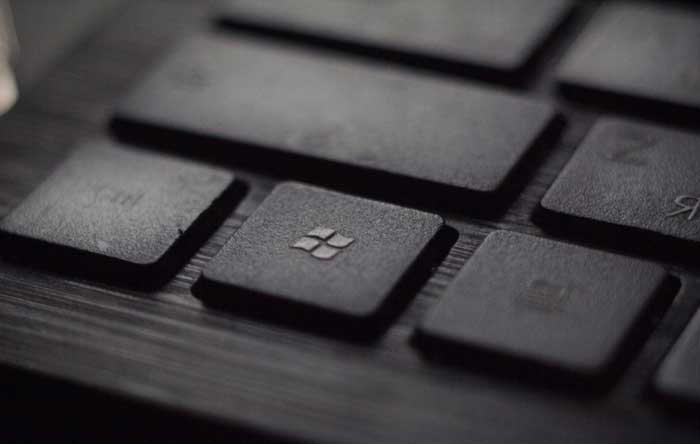Log into your computer with a PIN number rather than a password
An update Microsoft has been heralding for the Windows 10 is the passwordless sign-in. Here, you won’t be able to use a password for your device. But this doesn’t mean that your device will be left unprotected. On your Windows Hello, you’ll either sign in with your fingerprints, iris, face authentication, or a PIN code.
However, the PIN code will replace the password.
This passwordless feature will be a security update added to the next version of Windows 10, called 20H1. Windows 10 20H1 may arrive this month or by May 2020.
It will make improvements on Bluetooth connectivity, Cortana, Notepad, and other aspects. But these updates are minor compared to the passwordless sign-in. Microsoft asserts that using a PIN could help you avoid spyware attacks.
According to the Microsoft insider view document for Build 18936 published in March, the ability to make your device passwordless gives a better sign-in experience, increases security, and ensures that all your Microsoft accounts go through multifactor authentication.
So, how is a PIN more secure than a password? And what’s the difference between the two? Let’s take a look:
Similarities between A PIN and A Password
Structure
The structure of a PIN and a password are similar. A PIN looks like a password. It’s also mainly a set of numbers.
But, it can have the same length and characters as a password. You can add letters and symbols to make it more secure, just like a password.
Management Policies
PINs and passwords go through the same IT management policies.
These policies check their history and when they’ll expire. They also check PINs and passwords length, and how complicated they are. For instance, Deakin states that your Windows Hello PIN should have the following requirements:
- It should be more than six characters and less than sixteen.
- Your PIN must contain numbers.
- The numbers shouldn’t be in a sequence or be a repetition of the same digit.
- You can add letters and symbols.
- Change your PIN after six months.
- Each new PIN should differ from the last five PINs you’ve had.
Complexity
What comes into your mind when you think about a PIN? A four-digit code of numbers? B5rl,8Jd! could be a PIN or a password. There’s no difference in their complexity.
Administrators can set how complex they want a PIN to be. They can make special characters or uppercase letters a requirement.
PIN Required For Biometrics Sign-In
What are biometrics?
Biometrics are biological technology used to prove to a computer that you are you. Some are facial, fingerprint, and eye recognition.
Sometimes, signing in with biometrics won’t work because the sensor isn’t working as it should or you’re injured. To mitigate that, you’ll need to use your PIN as another option.
On Windows Hello, you create your PIN first to ensure you can use it when your biometrics isn’t working. This sign-in method also applies to a password.

How A PIN Is More Secure Than a Password
Although they’re similar, a PIN is different from a password. It differs in how it works. A PIN’s mode of operation, rather than its structure, is what makes it more secure.
PIN Is Specific To the Device
The PIN you set up on your laptop is for only that system. You won’t be able to use it on other devices.
If someone steals your PIN, they would have to take your device too. But anybody who steals your account password can log in from anywhere in the world.
Your account gets more security since a person would have to get your PIN and hardware before gaining entrance.
PIN Is Localized
A PIN isn’t sent through the internet or stored on a server. Even if you decide to browse the net for a paper service or paper writers, your Hello PIN won’t be transmitted online.
The process of signing in sends your password through the internet. If you input the password into your account, attackers can intercept it during transmission or hack into the server and steal it
When you set up a new PIN on your Windows Hello, it connects to the identity provider and creates a nonidentical key pair. This key pair becomes the form of authentication. Whenever you sign in, the PIN unlocks the authentication key, which alerts the server.
The PIN is never transmitted to the server because it’s localized and unique to your device.
PIN Has Security Backing
Windows 10 devices have TPM – Trusted Platform Module chip, which is a cryptoprocessor that has several security mechanisms. It protects the device from attacks, like PIN brute force attack and malicious software.
It also protects the asymmetric key pair from attackers. The key is created within TPM and secured by it.
If there are too many incorrect attempts to input the PIN, your device automatically gets locked.
How to Set Up A PIN on Your Windows Hello Account
Setting up a Windows Hello PIN is easy.
First, you open the start menu and go to settings. Then you click on accounts and go to sign-in options. Scroll through the options until you get to PIN. Click on it and select add.
Follow the instructions to input your PIN. Retype it to confirm. You can now use your PIN with your device.
Conclusion:
The Windows Hello PIN sign-in feature is a new and more secure update.
On the surface, it looks like a password. But it differs in so many ways. TPM security backs your Hello PIN, which is local to your device.
Once Microsoft rolls out the update, you can set up your PIN and enjoy an account with higher security. Better still, you can change your Hello password to a PIN right away.
Author’s Bio:
Michael Gorman is a UK expert freelance writer, editor, and proofreader who works in one of the best paper writing services. He writes blogs and articles in the niches – essay writing service UK and best assignment writing service UK.






